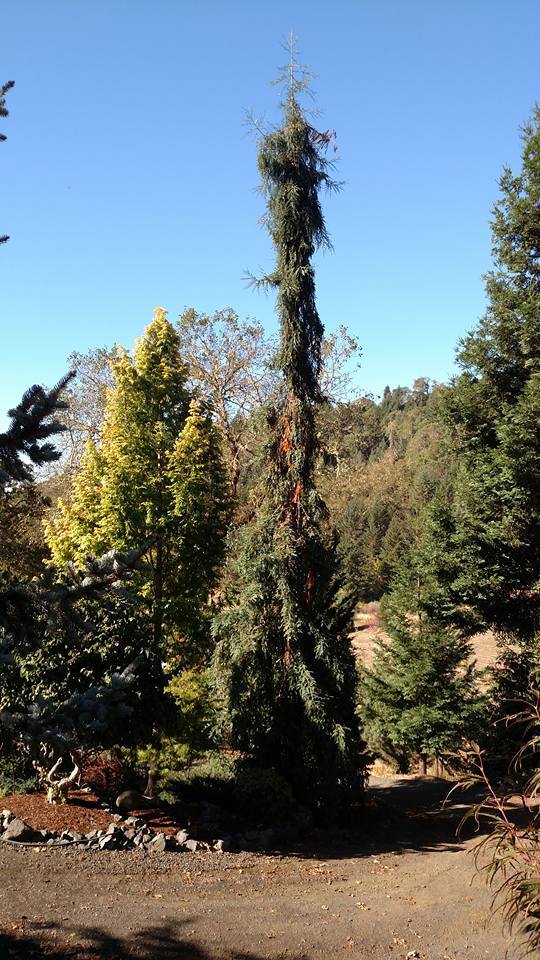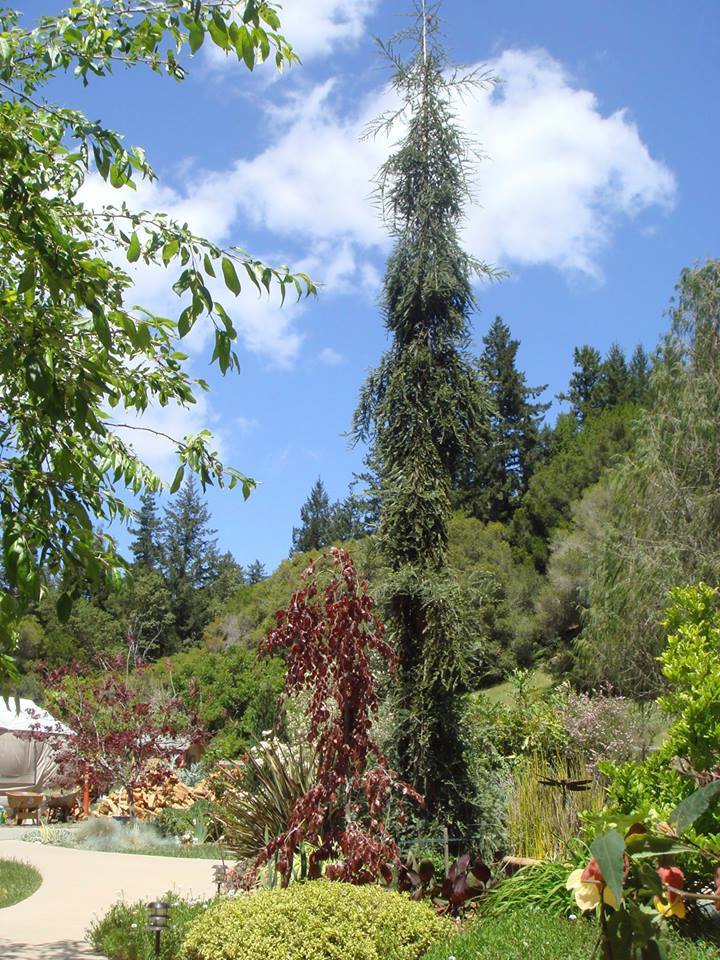Sequoia sempervirens 'Loma Prieta Spike' is a strongly growing, robust, upright weeping selection of coast redwood with a dominant central leader and cloaked (weeping) lateral branching. After 10 years of growth, a mature specimen will measure 20 feet (6 m) tall and 6 feet (2 m) wide, an annual growth rate of 2 feet (60 cm) or more. While superficially similar to Sequoiadendron giganteum 'Pendulum,'™ this conifer has less of a meandering growth habit; it grows straight skyward, creating stunning exclamation point in the landscape.
This cultivar originated as a natural mutation found in the late 1980s by Allan Korth, a former nurseryman formally of Soquel, California. He named the plant around the time of the 1989 Loma Prieta earthquake and its notable 'œspike' in the Richter scale. He found the mother plant in near the epicenter in the vicinity Loma Prieta Peak in the Nisene Marks Forest in the Santa Cruz Mountains. Saratoga Horticultural Foundation, California, is credited with introducing it to the nursery trade.
When first released to the trade, it was mistakenly called 'Loma Prieta'. Several places were calling it such. It was also briefly called 'Stricta' which violates the rules of nomenclature pertaining to use of Latin cultivar names post-1959. When found in the nursery trade, this conifer will almost always be seen named 'Mt. Loma Prieta Spike'. It is not known how this error in nomenclature came to be.

